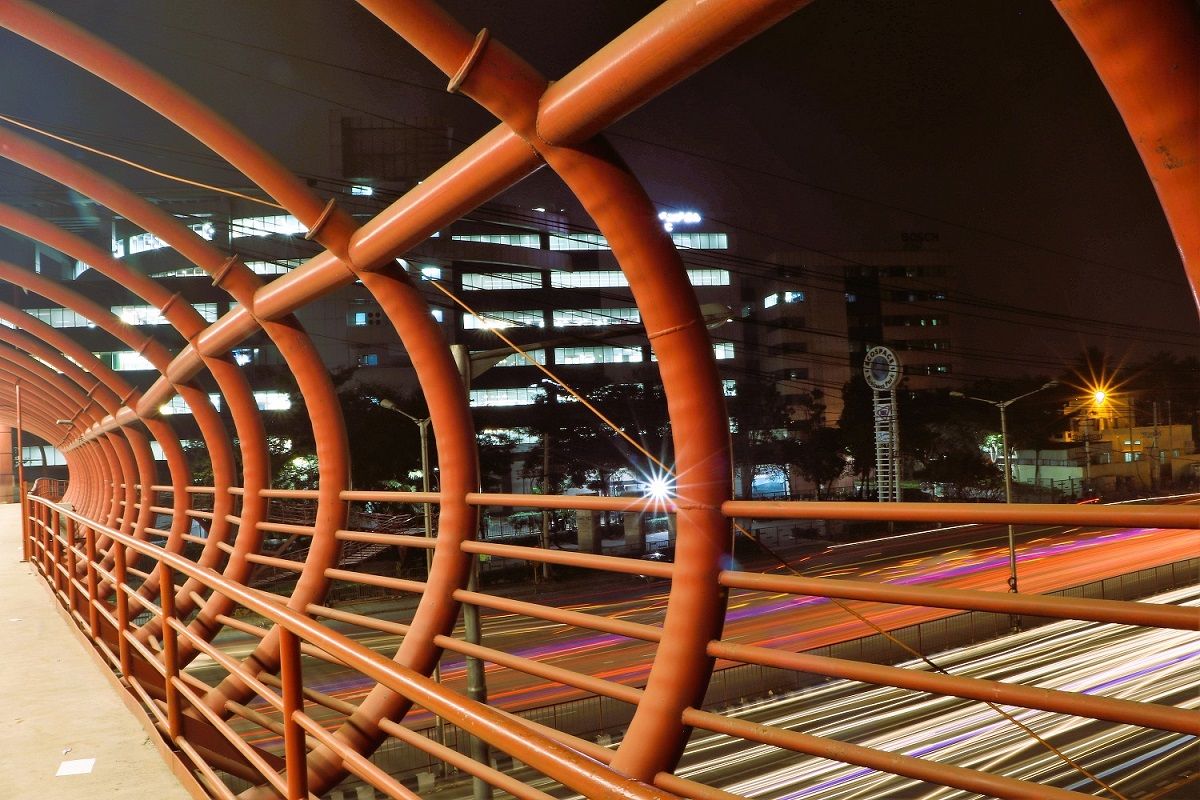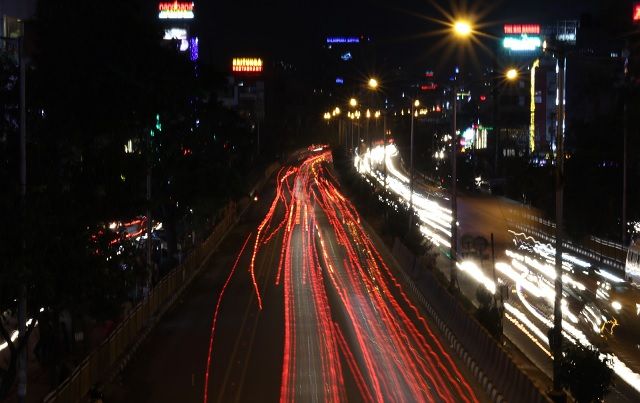Capturing light trails of traffic in Bangalore

Recently I published an image which captured traffic light trails in Bangalore, and many of my friends asked me how I got such light trails.
Below is the image of the light trails embedded in Instagram.
There are two things which are unique about this photo
- The light trails and
- The (traffic) lights look like the sun.
Let me tell you how to achieve these two things.
How to make lights look like the sun
- Reduce the aperture of the camera to the minimum possible. Highly recommend using a DSLR camera for this purpose, as not many modern-day mobiles provide the capability to change the aperture. The above image was taken at F22. If your device doesn't support lower than F16, there is a greater chance of not getting lights that look like the sun.
- Reduce the ISO to the minimum possible - this helps to generate a good-quality image. The above image was taken at ISO100.
How to capture light trails
To achieve the light trails, we need the following.
- Sturdy tripod
- ND filter and
- A camera which allows you to change the Shutter speed.
Sturdy tripod

We need a Sturdy tripod since we will be taking images with long shutter speeds. Having a sturdy tripod ensures that the camera is not shaking. We can also add weight to the tripod to make it sturdy.
Most of the light trail pictures I have taken in Bangalore were from foot over bridges which generally shake because of the wind. Hence, it is very important to carry a sturdy camera to avoid bad photographs.
ND Filter
The secret ingredient, in my opinion, to make light trail photographs look great is to use ND Filter. Many do not mention using an ND Filter unless you are paying a photographer to learn. I have taken many photos without an ND Filter, which weren't that impressive. I discovered ND Filters accidentally while reading about a DSLR camera's filter lenses.
ND Filter is a lens cap that can be considered sunglasses for cameras. If you have an ND filter, you can reduce the light that goes into the camera even further, thus increasing the shutter speed. There are various types of ND filters. You can do some research about them.
I own a Tiffen 67mm Neutral Density 0.9 Filter, which works well for night photography.

ND Filter can be mounted onto your lens. Every lens has a diameter. Make sure that you get a lens filter that matches your lens size.
Shutter Speed
Two things need to be present to achieve light trails.
- Movement of light and
- Exposing your camera to the movement of the light for a long time - This is also called a long exposure shot.
We need to experiment using a shutter speed. Pick one duration between the maximum supported shutter speed and one second and capture images. There is no correct number for the shutter speed. You will have to keep experimenting until you get a good image.
You can also do a binary search to find the best settings for shutter speed in a short amount of time (Software Engineer Joke😜)
One last thing
Besides the equipment, you will also need the courage to install your tripod and camera on the road while people are watching you. People take notice of you with all the equipment. Going with friends or other photographers helps reduce anxiety while taking long exposure shots as people pass by.
Have you already taken any long-exposure photographs? If yes, share them with me in the comments or drop an email.
Recommendations
If you liked this article, you might also like reading the following.
- Breath-taking 360° photograph up in the air
- The magician who creates digital images from the text: DALL-E
- My Art page
❤️ Enjoyed this article?
Forward to a friend and let them know where they can subscribe (hint: it's here).
Anything else? Comment below to say hello!
